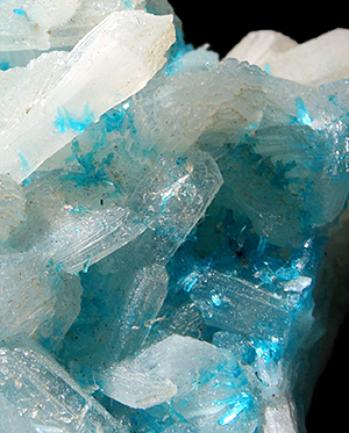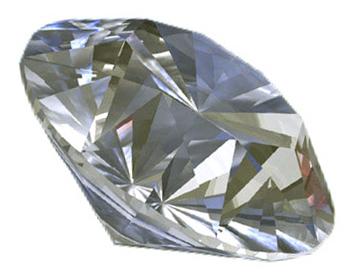Fun Facts About Rocks and Minerals
 Did you know that the diamond is the hardest natural substance found on earth? Did you know that the diamond is the hardest natural substance found on earth?  Did you know that quartz is one of the most common minerals on Earth? Did you know that quartz is one of the most common minerals on Earth?  Did you know that marble forms from metamorphosed carbonate rock, most usually limestone? Did you know that marble forms from metamorphosed carbonate rock, most usually limestone?  Did you know that basalt is the most common rock on Earth? Did you know that basalt is the most common rock on Earth?  Did you know that breccia is a rock composed of generally large, sharp fragments cemented together? Did you know that breccia is a rock composed of generally large, sharp fragments cemented together?  Did you know feldspars make up more than 50% of the Earth's crust? Did you know feldspars make up more than 50% of the Earth's crust?  Did you know the first recorded use of turqouise dates back to 5000 BC in Mesopotamia, where people used the gemstone to make beads? Did you know the first recorded use of turqouise dates back to 5000 BC in Mesopotamia, where people used the gemstone to make beads?  Did you know lapis lazul is treasured for its rich blue color and is often used in jewelry? Did you also know that ancient Eqyptians used powdered lapis lazul as eye shadow? Did you know lapis lazul is treasured for its rich blue color and is often used in jewelry? Did you also know that ancient Eqyptians used powdered lapis lazul as eye shadow?  Did you know jade because of it's toughness has been used for many cultural things like hammers, fish hooks, and stone axes. Did you know jade because of it's toughness has been used for many cultural things like hammers, fish hooks, and stone axes.  Did you know that rubies are one of the most popular gemstones today. Did you know that rubies are one of the most popular gemstones today.  Did you know that the first geologist on the moon was Harrison Schmitt who was part of the Apollo 17 mission? From the rock samples he collected, scientists have been able to learn many things about the moon. Did you know that the first geologist on the moon was Harrison Schmitt who was part of the Apollo 17 mission? From the rock samples he collected, scientists have been able to learn many things about the moon.  Did you know that the Earth is approximately 4.8 billion years old? Did you know that the Earth is approximately 4.8 billion years old?  Did you know that gold is so soft and easily worked that you could roll an ounce of it into a hair-thin wire 50 miles long? Did you know that gold is so soft and easily worked that you could roll an ounce of it into a hair-thin wire 50 miles long?  Did you know that the biggest pure-gold nugget was found in Australia in 1869 and weighed 156 pounds? Did you know that the biggest pure-gold nugget was found in Australia in 1869 and weighed 156 pounds?  Did you know that platinum is so rare that two million pounds of ore may contain only one pound of metal? Did you know that platinum is so rare that two million pounds of ore may contain only one pound of metal?  Did you know that geodes are dull balls of igneous or sedimentary rock on the outside, but contain beautiful crystals on the inside? Did you know that geodes are dull balls of igneous or sedimentary rock on the outside, but contain beautiful crystals on the inside?  Did you know that meteorites, rocks from space, help scientists learn about the solar system and are very valuable, too? Did you know that meteorites, rocks from space, help scientists learn about the solar system and are very valuable, too?  Did you know that the Taj Mahal built between 1632 and 1654 in India is made entirely out of marble? Did you know that the Taj Mahal built between 1632 and 1654 in India is made entirely out of marble? |
Cant forget about the pictures!
 | Calcite-BariteThis mineral is really cool, want to know why? Because it emits light! Some minerals can emit the light when exposed to non-visible ultraviolet light? UV light reacts with the chemicals of a mineral and causes that mineral starts to glow. Some minerals even continue to glow after the light has been removed. The light which minerals emit is often very different then normal color of the mineral and these colours are really magickal. Please enjoy this secret world of minerals, exposed to the UV light. Lovers of the nature will enjoy that for sure. |
 |
|
 |  |
 |
Diamonds!
 |  |
How are these beauties formed?
Diamonds were formed in the earth thousands of years ago under extreme heat and pressure. This extreme heat and pressure in the earth transformed the carbon into crystals and turned it colorless. Although diamonds formed deep in the earth, volcanic activity is what brought them to the surface. Hence, these volcanic pipes have diamonds in them. Over time, as some other minerals mix with carbon the diamond may takes on color. Most diamonds have some hint of yellow or brown in them. Others that did not mix with minerals are colorless. Some diamonds undergo dramatic changes to vivid or unique colors. These are very rare and valued more than normal diamonds.
Where are diamonds mined?
Alluvial deposits on riverbanks in India, and then Brazil, were mined to supply Europe through the 1700s. Alluvial diamonds were found in Africa in the late 1800s. An alluvial deposit is a buildup of alluvium, or sediment. Diamonds in volcanic pipes were first located in Kimberley South Africa in 1869. Over the next century thousands of thus-named “kimberlite” pipes were developed in Africa and Russia. In 1976 a diamond-bearing lamproite pipe was found in Australia (the Argyle mine) and in the 1990s the Ekati kimberlite was found under a Canadian lake, which has led to the location of other diamondiferous fields in Canada. Today the most significant diamond producers are Africa, Russia, Australia and Canada. Asia and South America are also commercially important. Alluvial diamonds are mined in riverbed, coastal and deep sea operations and hard rock diamonds are mined using an open pit or underground process.
How diamonds are priced?
Diamonds are valued by their Cut, Color, Clarity, and Carat weight. You should remember the C's that are used to value diamonds. Cut, Color, and Clarity are used to measure the quality of the diamond and the final C, which is Carat, is used to measure the size of the diamond. Man creates cut in a diamond and the other C's are formed in nature. Smart shoppers will also keep another C in mind: Confirmation, which depends on what the manufacturer and seller offer.
What types of diamonds are there?
When minerals mix with diamond in nature, it gives the diamond color. Based on the type of mineral that is mixed, we can classify the diamonds. The following are colors that are found.
- Yellow: this color is formed when Nitrogen combines with diamond crystals.
- Brown: Dislocation in the lattice of atoms causes brown coloring.
- Blue: During the formation of the diamond if elements of Boron are mixed then the diamond may take on blue coloring.
- Green: Green is caused due to a missing atom in the lattice of atoms.
- Pink: Dislocations in the lattice, missing atoms and some impurities that are non-nitrogen cause pink color.
Read more: http://www.whiteflash.com/about-diamonds/diamond-education/diamonds-how-do-they-form.htm#ixzz292cLp7Jl